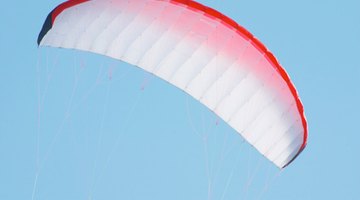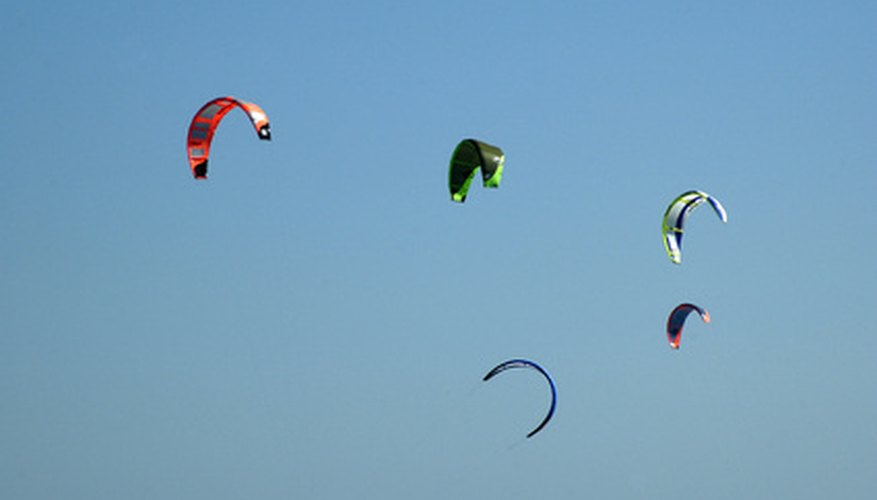Parafoil kites offer a whole new dimension of fun and freedom in the air. Unlike most other kite designs, parafoil kites do not have a ridged frame to hold their shape. Instead, they rely on wind moving through chambers build into the fabric of the kite to keep their shape. This means that the kite must always have airflow moving through it to stay in the air. It also makes speed, turns and pull possible.
Understanding the "Wind Cone"
When flying a dual or quad-line parafoil kite, you must be aware of the "wind cone" to keep the kite in the air. Simply put, when your back is to the wind, the wind cone is the zone in the air where the wind will have an effect on your kite. The wind is strongest directly in front of you, and weakest directly above and to the sides of you.
Launching

Have a friend hold the kite open, directly down wind from you. Dual-line kites are one-way; make sure the openings to the wind chambers are facing up. Unwind the strings to their full length, and when you are ready, have the friend toss the kite gently in the air, and pull back on the strings at the same time.
Warning: The kite can move very fast, and if the kite or the strings hit someone or something, they can cause serious damage or injury. Always make sure your flying range is empty of people, animals, and obstacles--including your friend!
- Have a friend hold the kite open, directly down wind from you.
- Warning: The kite can move very fast, and if the kite or the strings hit someone or something, they can cause serious damage or injury.
Controlling Direction and Speed

Most dual-line and quad-line kites have two separate handles that you hold in each hand. You make the kite turn by pulling one hand back. The more you pull, the more the kite will turn. Do not cross your hands, keep them a shoulder's length apart and parallel to the ground. The kite will continue to turn until you stop pulling.
Speed is increased both by making the kite fly through the area of the wind cone where the wind is the strongest, and by pulling back with both hands as the kite is accelerating. Manoeuvring the kite toward the edges of the wind cone decreases speed.
The kite generates lift when moving quickly, and will pull against you. Depending on your kite, the wind speed and flight direction, it can easily pull hard enough to knock you down or drag you, potentially injuring you. Be sure to lean back against the pull and control the kite's speed to match your level of experience.
- Most dual-line and quad-line kites have two separate handles that you hold in each hand.
- Depending on your kite, the wind speed and flight direction, it can easily pull hard enough to knock you down or drag you, potentially injuring you.
Landing
If the kite crashes into the ground or an object at a high speed it can become damaged. Manoeuvre the kite to the far edge of the wind cone near the ground, and let it collapse and fall to the ground softly.
